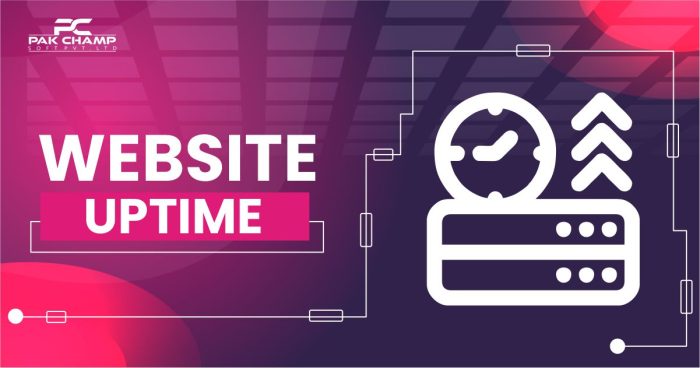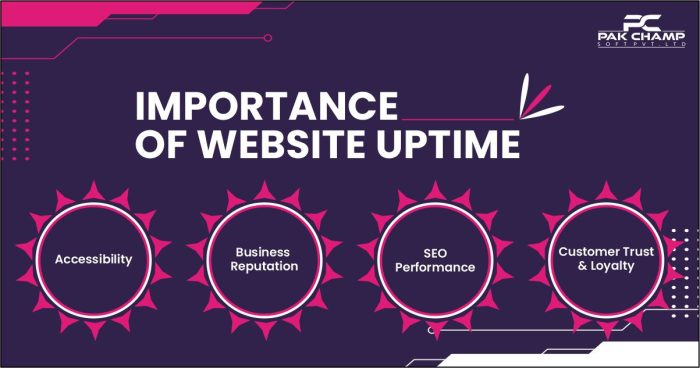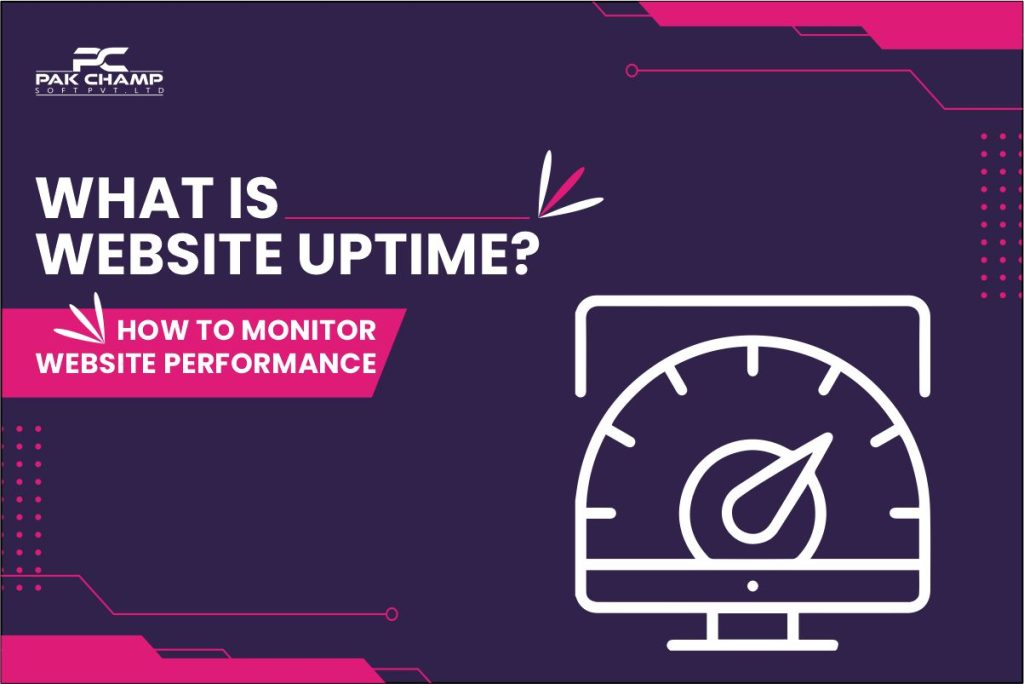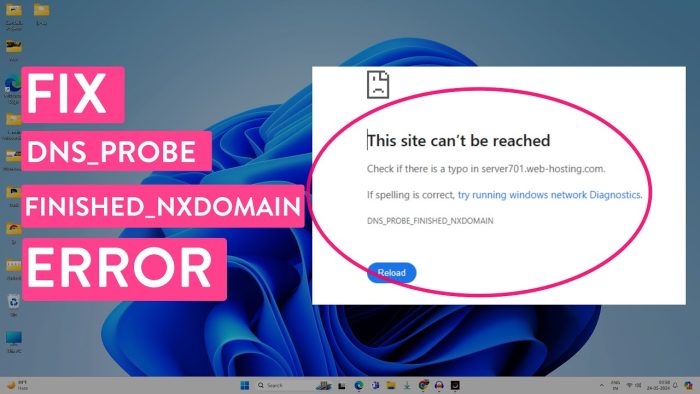Website uptime is like blood in a website to maintain a digital presence. It measures how often your website is accessible for site visitors without experiencing downtime. In today’s digital world, uninterrupted website availability is essential to meet the level of competition and maintain customer trust in your brand to make repeated purchases. A high percentage of website uptime is necessary to strike against business competitors.
Monitoring a website’s uptime is not just a matter of technical understanding; it’s a strategic necessity. It’s about identifying and resolving technical issues before they can damage your online reputation and cause business loss. This strategic approach to uptime monitoring empowers you to stay in control of your online presence.
No one wants their store closed when customers knock at their digital doorstep. The frustration of being unavailable can drive your website visitors away. But with strategic uptime monitoring, you can be in control of your online presence, ensuring your visitors always find your ‘store’ open.
In this guiding blog, we’ll discuss the significance of website uptime with practical strategies to monitor website availability effectively. Let’s dive in and discover how you can confidently manage your website’s uptime.
Table of Contents
ToggleWhat Is Website Uptime?

Website uptime refers to the duration of time that your website is operational and accessible to its users. It indicates that your store is open for business—higher uptime ensures your site’s availability for visitors to purchase.
What is the Importance of Website Uptime?

Website uptime is not just a technical metric; it’s a critical factor in maintaining your marketing presence and ensuring a positive user experience. High uptime supports businesses by providing smooth and uninterrupted shopping experiences, which leads to increased sales and revenue. In this section, we’ll delve into the importance of website uptime and its expected results, underlining its significance in the digital world.
Accessibility:
High uptime ensures your users can access your website uninterruptedly, whether browsing for information, shopping, or even getting services. Website accessibility is crucial in building trust and satisfaction among site visitors.
Business Reputation:
Consistent website availability boosts a business’s reputation, reliability, and trustworthiness among customers. Website uptime helps build long-term relationships with customers. When users trust a company, they come back and repeat purchases.
SEO Performance:
Search engines like Google rank frequently available websites. High uptime directly contributes to revenue generation, especially for business websites and e-commerce stores. For instance, during peak shopping hours, sales seasons, and regular operations, website downtime can lead to lost business sales opportunities. On the other hand, frequently available websites allow customers to browse products, add items to their carts, and complete purchases and transactions without hassle.
Customer Trust & Loyalty:
When customers experience higher uptime, they are more likely to trust the brand. Website uptime is not just about maintaining competitive advantage; it’s a key factor in building and reinforcing customer trust and loyalty in a competitive industry.
How to Monitor Website Performance
Monitoring website uptime is crucial to ensure website performance. Here are a few steps to effectively monitor your website uptime. Let’s Check.
Choose the Right Monitoring Services /Tools:
Choosing the right website monitoring service or tools gives detailed performance data and alerts before they affect your business reputation. These user-friendly services or tools offer instant results, such as Pingdom, UptimeRobot, StatusCake, Site24x7, and much more. Their primary features include uptime monitoring, performance metrics, alerts, and reporting. Choose the right monitoring services or tools that meet your needs regarding features, reliability, and cost for effective troubleshooting and optimization, ensuring you are well-prepared to manage your website’s uptime.
Manual Monitoring:
Manual monitoring is necessary to observe and check the process of the website’s functionality. It’s beneficial for proactive website maintenance after troubleshooting. Here are some key considerations and practices for manual monitoring.
In-Depth Analysis:
Manual monitoring provides a profound analysis beyond what automated tools can provide. It involves reviewing server logs, database queries, and other system metrics to identify complex issues.
User Interaction Evaluation:
Manual monitoring helps in-depth and critical user interaction with accurate human judgment and troubleshooting expertise that automated tools may miss.
Custom Check:
Manual monitoring can incorporate specific checks to customize your website as per your business requirements that automated tools may not cover.
Maintenance & Updates:
Manual monitoring is essential during maintenance windows or updates when automated monitoring systems are temporarily offline.
Automated Monitoring:
Automated monitoring based on software tools continuously monitors your website status and report. This method helps detect and support push notifications for quick response and minimal website downtime. Here are some key considerations and practices for automated monitoring.
Real-Time Alerts:
Automated monitoring software tools detect website downtime or performance issues around the clock without human intervention and send alerts to administrators. This rapid notification minimizes the duration of downtime.
Historical Data:
Automated software tools provide historical data and performance trends, with in-depth analysis to identify recurring issues for optimization.
Establish Monitoring Intervals:
Monitoring intervals for high-uptime environments help detect issues promptly. The appropriate monitoring intervals are customized based on the criticality of systems, performance requirements, SLAs, and operational considerations to detect and mitigate problems that could affect website uptime and service availability.
For high-traffic websites, optimal performance can be achieved in 1-minute intervals. For smaller, low-traffic sites, 30-minute intervals to an hour will be sufficient.
Note: By integrating automated and manual monitoring, you can significantly improve website uptime by delivering the best user experience and resolving any issues that may hurt your digital performance.
Configure Alert Notifications:
Configuring alert notifications addresses any potential issues that may impact website availability. By utilizing multiple notification channels for redundancy, such as email, SMS, and instant messaging platforms like Slack or Microsoft Teams, organizations can configure alert notifications effectively to maintain high uptime for continuous service availability and optimal performance.
Schedule Regular Reviews & Update Monitoring Strategies:
Regularly reviewing and updating monitoring strategies supports high uptime and addresses operational needs. As your website experiences traffic growth, you should develop your uptime monitoring strategy by integrating new tools and adding new features to meet its expanding needs.
By regularly reviewing and updating monitoring strategies, you can adapt your digital requirements and enhance operational efficiency to maintain a high uptime percentage. It’s not just about setting it and forgetting it; it’s about continuous improvement and adaptability to meet the evolving needs of your digital storefront.
Enhancing Website Uptime with Reliable Webhost:
Whenever you choose a web hosting company for your online presence, find a reliable hosting provider that can provide 24/7 support to remain operational and provide the best user experience to maximize business opportunities. A reliable and professional web hosting company like Pakchamp offers a robust hosting infrastructure to meet everyone’s needs. We also support proactive monitoring and strategic updates to enhance our client’s uptime services.
Focuses on Sincere Business Relationships

Pakchamp Web Hosting believes in honest and sincere long-term business relationships with our valued clients. Our commitment extends beyond delivering exceptional digital services to meet everyone’s needs. Most web hosting companies guarantee 100% uptime, but this is practically unachievable. At Pakchamp, we always prefer to deliver robust hosting infrastructure rather than a guarantee. “To Meet Every Need”, our web and server hosting solutions provide fast, secure, and reliable web hosting services in Pakistan at affordable prices.
Conclusion
High website uptime is essential to building a digital empire in the competitive digital landscape. Effective website monitoring practices help businesses identify and resolve potential issues before they escalate their online presence. Continuous improvement in monitoring strategies ensures your websites remain reliable, responsive, and capable of meeting user expectations around the clock.
We hope the abovementioned strategies provide valuable insights into optimizing your website’s uptime for better performance and user experience.







